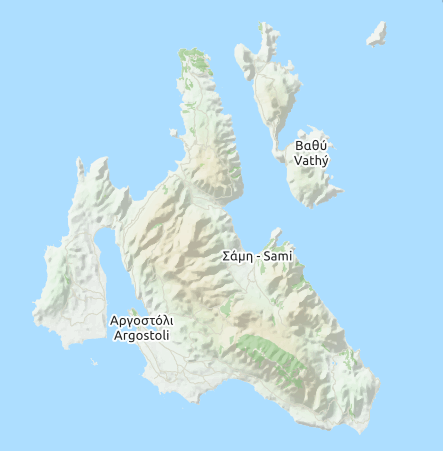“Good practices of island development” is the title of the Local Program LEADER / CLLD Kefalonia-Ithaca for the programming period 2014-2020.
The intervention area of the Kefalonia-Ithaca LAG for the implementation of the program is common for both European Funds (EAFRD and EMFF).
Area and population
The total area and the permanent population of the intervention area of Kefalonia and Ithaca is estimated at 904.4 km2 and 39,032 inhabitants. The intervention area includes four municipalities Argostoli, Lixouri, Sami and Ithaca. Geographically the area is located west of mainland Greece (Peloponnese, Western Greece) and south of the Ionian Islands of the Ionian Sea.
| Αrea |
Permanent population 2011
|
| Sub-region of Kefalonia |
35.801
|
| Section of Argostoli |
13.237
|
| Section of Eleiou – Pronnon |
3.677
|
| Section of Erisos |
1.472
|
| Section of Leivathos |
5.745
|
| Section of Omala |
840
|
| Section of Lixouri |
7.098
|
| Section of Pilaros |
1.391
|
| Section of Sami |
2.341
|
| Sub-region of Ithaca |
3.231
|
| Total population of intervention area |
39.032
|
Kefalonia and Ithaca profile
Remarkable morphological feature of the intervention area are the coasts, which are formed by bays and capes, creating a diverse landscape and coasts, and the same time the mountain Ainos dominates.
The complex of the two islands forms island zone of the Ionian Islands, with a common history that is reflected in the natural and man-made environment.
The island of Cephalonia is the largest island of the Ionian Islands, with an interesting landscape of coasts and coves, the existence of Kefalonian spruce forests and rich geological features. The island of Ithaca, known since the Homeric Odyssey, is an island-symbol of nostalgia for the homeland. The island with landscape alternations between bays and capes and mountainous and inaccessible and stony morphology
The 2 islands show an increasing population trend, with the age group 0- 35(years) showing a gradual decrease, despite the fact that it is the dominant age group.
Important for the Local Strategic Plan is the fact that the dependency index for the region shows a significant decrease over the years, with the youth index appearing stable and the aging index showing a marginal increase. At the same time, there is a significant decrease in the illiterate population in the region and a gradual increase in the level of education, an element that upgrades the region in social and economic sectors.
The main sector for employment, with a significant upward trend for the region, is tourism and services, while at the same time there is a decrease in agriculture and industry. Main characteristic in Strategy Plan is the evolution of unemployment, which shows increasing trends.
Regarding the above observation is required the renewal of the young population of the region, with the improvement of the standard of living in the region and the return to agriculture and livestock, with appropriate training and education.

